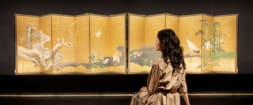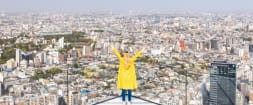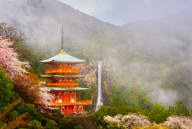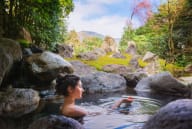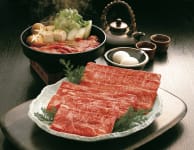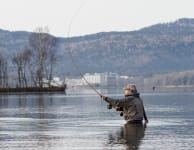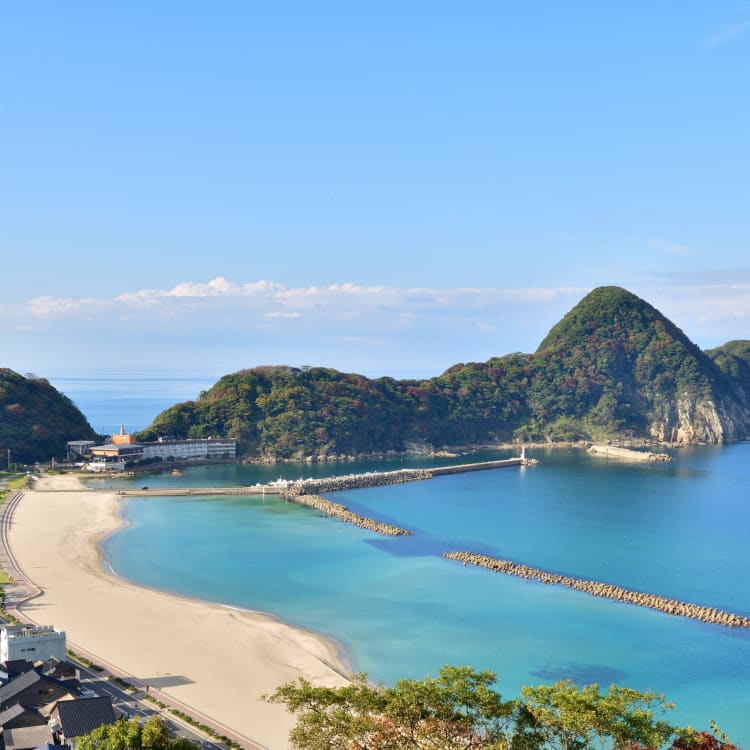

STORY Recharge and Renew in Hyogo [Sponsored]
Explore the natural beauty of Hyogo, and refresh your mind, body and soul
Hyogo Prefecture is at the heart of the Kansai region, stretching from the Sea of Japan to the island-studded Seto Inland Sea. Between the coasts, a vast area of forested mountains dotted with charming hot spring villages and connected by hiking routes, invites exploration. Awaji Island, close to the prefectural capital Kobe, is an important part of Japan's creation stories. It is said to be the first island that was formed by the ancient deities, which is easy to imagine once you see its mysterious whirlpools and ancient geological formations. Explore the varied landscapes at leisure and consider a long stay to fully recharge and relax. Breathe in bracing sea air along the shore, and stroll through quiet forests illuminated by light filtered through the trees and escape the stresses of everyday life in Hyogo.
Refresh your senses by the sea

Paddle the clear waters near Takeno on a Geo-canoe tour.
The northern coast of Hyogo is within the San'in Kaigan UNESCO Global Geopark , which covers the coast from Kyoto's Kyogamisaki Cape in the east, to Aoya in Tottori, in the west. The environment is varied, with dramatic coastlines, sand dunes, caves, waterfalls, and soothing hot springs. Coastal communities are connected by the San'in Kaigan Geopark Trail, which comprises 230 kilometers of coastal trails divided into shorter courses of varying lengths and levels of difficulty.
Start at Takeno Hama Beach to hike the Nekozaki Peninsula that juts out from the beach. The round trip takes around two hours, and the views from the summit over the coastal town of Takeno are beautiful. Takeno is also the starting point for Geo-canoe tours. Paddle the clear waters and explore sea caves and dramatic rock formations with a guide. In summer, the sea around Takeno is calm, and ideal for SUP (stand-up paddleboard) tours. Swimming, snorkeling, kayaking and boat cruises are other great ways to explore the coastline. Visitors can also rent bicycles from Takeno Tourism Center to enjoy the coastal scenery or explore inland.
Further west along the coast, the San'in Kaigan Geopark Trail near the border with Tottori Prefecture winds along the crenulated coastline. Hike a circular course from Hamasaka Station to Moroyose Fishing Port via Sououbuji Temple, Mt. Shiroyama and Mt. Kannon for panoramic views of the Sea of Japan, including the dramatic Senzoku Cliff. The course covers a little over 10 kilometers and takes around 4 hours. The free footbath at Hamasaka Station is the perfect reward at the end of the hike. Relax at Sun Beach in Hamasaka, which has long stretches of sand, a shady pine forest, hot springs, and camping grounds. Some courses, ranging from a few hours to a full day, include Tottori Station in Tottori Prefecture. The San'in Main Line train covers much of the same route, allowing for convenient shortcuts.
Hot springs and highland hiking

Visit the fascinating basalt caves at Genbudo Park, close to Kinosaki Onsen.
Make Kinosaki Onsen your base for relaxation, and for exploring the inland Tajima area. The charming hot spring town has seven public bathhouses, each with its own distinctive style and baths. Make the most of your visit by staying at one of the many traditional inns, don a cotton yukata robe, and stroll the quaint streets lined with traditional stores and restaurants. Enjoy a long stay at Nishimuraya Hotel Shogetsutei , a hot-spring hotel with forest trails, indoor and outdoor hot springs, private in-room or restaurant dining, a swimming pool (seasonal), free rental bikes, and a free shuttle to Kinosaki Onsen Station.

Genbudo Museum features exhibitions of fossils and minerals, along with a restaurant with views over the river.
Genbudo Park is a must-visit when staying at Kinosaki Onsen. The park features a fascinating collection of basalt caves made of columnar joints formed around 1.6 million years ago by volcanic activity. The columnar joints soar above the Maruyama River in linear patterns. Learn about the area at the modern Genbudo Museum , which features exhibitions of fossils and minerals, craft workshops, and a restaurant with views over the river.
Further south from Genbudo in Toyooka City is the Hyogo Park of the Oriental White Stork . Here you can see the efforts being made to return the storks to the wild. In the past, storks were found all over Japan. However, in 1971, the wild storks in Japan became all but extinct. Today, there are more than 250 storks flying in the skies over Japan.
The roads around the wetlands and rice paddies are fairly flat, and ideal for cycling. Bicycles can be rented at Jibasan Shop Toyobra and Kinosaki Onsen Tourist Centre. Enjoy the fresh air and the varied shades of green, from vivid new rice shoots to the cool greens of the distant mountain forests.

The Ueyama Highlands are ideal for hiking, with views to the Sea of Japan.
Head further west to explore the Ueyama Highlands in Shinonsen. A three-hour walking course through beech forests and plains of Japanese silver grass starts from the parking area at Ueyama Highlands Mountain shelter. There is also a shorter hour-long hike. From the highlands you can see across the mountains, all the way to the Sea of Japan
Spiritual renewal, from meditation to yoga in the sky

Relax and explore the hot springs of Yumura Onsen.
Head to Shinonsen , in the western part of Tajima, which is the home of Tajima beef cattle , known as the source of Kobe beef. Relax at Yumura Onsen hot-spring resort, where you can cook eggs in the Arayu hot spring, or relax in the foot baths near the Haruki River. Some local restaurants serve vegetables cooked in the natural hot spring water, along with delicious Tajima beef. Enhance your spiritual journey with a visit to Antaiji Zen monastery, an easy drive from Yumura Onsen, or a bus ride and a walk from Hamasaka Station. The monastery welcomes visitors from all over the world to practice zazen meditation at one of the week-long retreats in May and July. Days consist of farm work, meditation, and simple communal meals.

Start your day with a refreshing yoga session at Takeda Castle ruins.
On a mountain high above the town of Asago, the ruins of Takeda Castle are often compared to Macchu Picchu. The castle was built in 1443 and abandoned in the early seventeenth century. In October and November, early risers can climb to the Ritsuunkyo observatory to see the castle appear to float above a sea of clouds. For a unique experience, try “Yoga in the sky” at the ruins to refresh mind and body. Participants meet at the foothills of the castle and walk about 20 minutes to the castle site. There is 40 minute yoga class in the fresh air at the summit (353.7 m), followed by a lunch of soba noodles at a local restaurant.
Cycle around the birthplace of Japan

See the Naruto whirlpools (depends on the season and the tides).
Awaji Island , shaped like a large teardrop in the Seto Inland Sea, is the legendary birthplace of Japan. The island is connected to Hyogo and Tokushima by bridge, and is ideal for cycling, with cycle rental shops around the island, and attractive routes suitable for all levels of experience. Along the way riders can stop at hot springs to relax and soothe their tired muscles. A 150-kilometer island circuit called Awaichi is a popular challenge for serious cyclists, but the route can be broken down into shorter courses depending on fitness level and interest. One of the most intriguing courses is the South Coast Loop, which takes riders close to the Naruto whirlpools , a natural phenomenon that occurs in the Naruto Strait between Awaji Island and Shikoku. The best way to see the whirlpools up close is on a cruise from Fukura Port. Uzushio Onsen is a hot spring famed for its skin softening properties, a short drive from the whirlpools. Stay in one of the nearby hotels or traditional inns with views across the Naruto Strait.
According to Japan's ancient texts, the Japanese archipelago was created by the deities Izanagi no Mikoto and Izanami no Mikoto, who stirred the sea waters with a heavenly spear. Awaji was the first island they created. There are several sacred sites associated with the story along the Awaichi route, including Izanagi Shrine and the tiny island of Eshima.
There are several accommodation options on the island, from simple beachside camping at Keino Matsubara Beach, to beach resorts at Sumoto Onsen and the luxurious Grand Nikko Hotel at Awaji Yumebutai, a seaside garden complex designed by renowned architect Tadao Ando.
Natural fun in Kobe

Wake up to spectacular views when you stay at Kobe's Glamp Dome.
If you have just a short time to experience the natural attractions of Hyogo Prefecture, the port city of Kobe is close to hiking paths and hot springs. Yuge Farm close to Mt. Rokko is an ideal one-day escape from the city, where you can enjoy farm-made cheese and other natural products. It is a pleasant 30-minute hike from Yuge Farm to Kobe Municipal Arboretum . You can also try glamping with beautiful views over lush scenery at Kobe's Glamp Dome , located in the mountains about 20 minute's drive from the center of Kobe. Stay in an all-weather dome with a private deck and cook your own barbecue dinner while gazing at the glittering lights of Kobe below.
Getting Around Hyogo

The Kansai Wide Area Pass covers JR-WEST trains and buses, as well as bicycle rental (this image is for illustration purposes only).
Hyogo Prefecture is convenient to access from Kyoto and Osaka to the east and Okayama, and Tottori to the west. The Kansai Wide Area Pass offers unlimited travel throughout the Kansai region on Japan Rail lines including the Sanyo Shinkansen, as well as local services of West JR Bus. Pass users can also enjoy free bicycle rental at "Ekirin Kun" stores and discounts on JR Rent-a-Car throughout the region.
Business hours
Due to measures to prevent the spread of coronavirus, business hours and conditions may be subject to change; please check with the venues before visiting.













